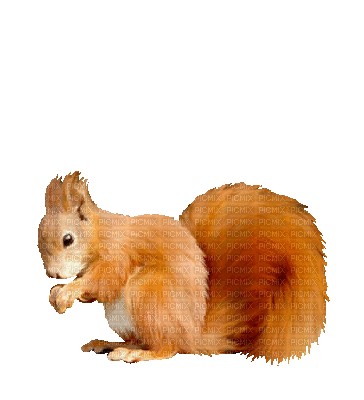 Squirrels are rodents of the family Sciuridae, which includes species such as chipmunks, ground squirrels and marmots. Approximately 285 species of squirrel have been found worldwide, from the Americas to Eurasia and Africa. In Canada there are 23 native species. We'll look just at squirrels native to Alberta, of which there are seven. Squirrels are small- to medium-sized terrestrial rodents. They fall into three categories:
In Canada, most species of squirrel reproduce once annually. Gestation typically lasts 24Ė44 days, and litters average three to eight young, depending on the species. At birth, the young are hairless and poorly developed, but their growth is rapid.  Squirrels are primarily herbivorous, mostly relying on green vegetation, nuts, seeds, bulbs and buds. However, most squirrels will gladly eat insects and eggs, as well as small birds and mammals.
Squirrels are primarily herbivorous, mostly relying on green vegetation, nuts, seeds, bulbs and buds. However, most squirrels will gladly eat insects and eggs, as well as small birds and mammals.Many species of trees (e.g., beech, maple, spruce) will synchronize their seed production in what is known as a mast year in an attempt to flood the ecosystem with so many seeds that the seed predators like squirrels are unable to eat them all, so that some tree seeds will make it to germination. Squirrels hoard food for a later time. Some species, like the Eastern gray squirrel and the fox squirrel, are scatter-hoarders and will bury seeds and nuts all around their home range. Others, like the red squirrel, are larder-hoarders and will cache cones and other food items in mounds within their territory. By burying or hoarding seeds across the forest and frequently not returning to eat those seeds, they plant countless trees every year, helping the forest regenerate. Squirrels are eaten by most medium-to-large predators in the areas they inhabit. While very fast, they can make up a significant portion of the diet of foxes, lynx, weasels, otters, martens, wolverines, rattlesnakes and various birds of prey. In certain areas, squirrels, especially ground squirrels, are also hunted by humans. As cities have encroached on natural spaces, many species of squirrels, most notably the Eastern gray squirrel, have learned to thrive in urban environments, losing much of their fear of humans. Lets look at the seven species of squirrel found in Alberta:
|